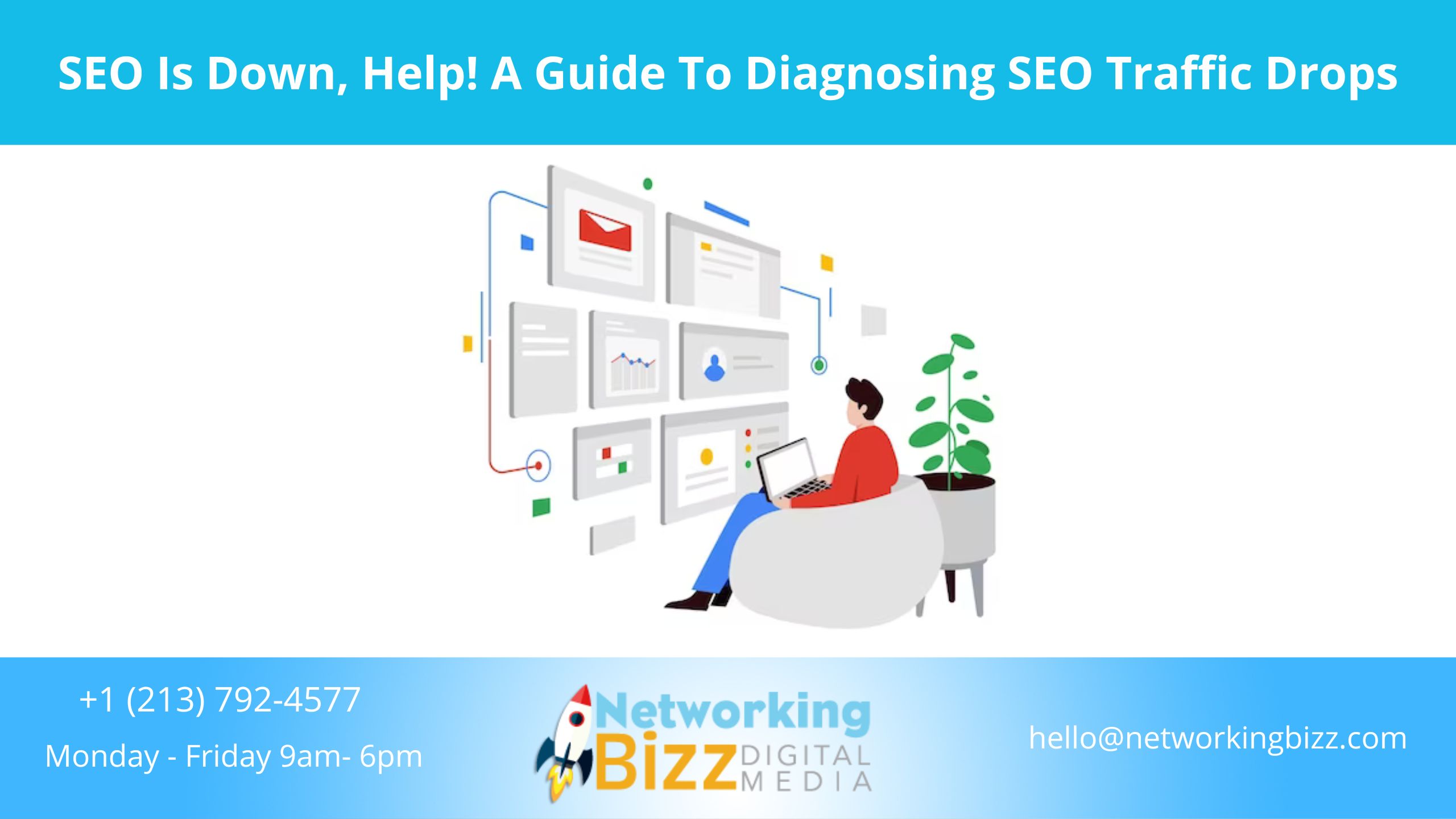Unravel the mystery behind your declining SEO traffic. Answer these questions to identify issues and restore your website’s search engine visibility.
Today’s Ask an SEO question is a common one, both from SEO pros and from clients.
I’m going to focus more on the first part: What causedi my traffic to drop month over month?
Here’s the full question from Britney in Houston, who writes:
What would cause a company’s organic search traffic to sharply decline MoM? We don’t have any broken links, all on-page SEO looks great (titles, meta descriptions, etc), Google has pages indexed, etc.
We have been running Google PPC ads with decent success and that has been driving steady traffic to the site. Direct traffic is up. I’m at a loss… Any ideas?
A drop in organic SEO traffic month over month (MoM) can be frustrating and leave clients in a panic trying to figure out what happened and what they should do about it.
It sounds like you’re on the right track with your investigation, but there are a few other things we should look for.
I’m going to do my best to provide a sort of “checklist” for diagnosing (and hopefully rectifying) an SEO drop.
First Step: Figure Out What Dropped
Before we get into the technical stuff or causes, we need to learn more about what dropped. Was it a specific page? A specific query? Or something more.
The best way to do this is with Google Search Console or Bing Webmaster Tools (use whichever search engine saw the drop.)
First, we’ll pull the MoM report and sort it by change. Then, look for any specific pages and/or queries that led to the drop.
If there are no key pages/queries that fell off, maybe it was a specific type of page or type of query that dropped.
This requires a little manual effort with the data, as all sites are different, but we should know our site well enough to spot any patterns. For example, maybe it’s all product landing pages, product family pages, or blog pages that dropped.
Pro tip: This is one of my biggest pet peeves I see in agency reporting. A report will start off saying that SEO is up or down X%, but never actually say what pages/queries/products caused that change.
That’s the information that your clients really want to know. Without that context, they can’t do anything actionable with the report. Always include the causes of any spikes in your reporting.
Once We Know What Caused The Drop, We Can Investigate
The first step is to do the “stupid” stuff.
If it was a specific page or template, let’s make sure it’s not blocked by robots.txt, still returns at 200 status code, and doesn’t contain an inadvertent noindex tag or canonical tag, etc.
You’d be shocked how often these things randomly occur on large enterprise websites without anybody knowing why. It’s always good to check.
From there, we should check the render of the page/template to make sure a code change didn’t cause the search engine not to be able to understand the page. This happens a lot, too, and can be tricky to catch.
I’d start by viewing the page cache on Google/Bing and using their fetch and render tools in their search consoles.
It’s no longer good enough to just “view source” in today’s web environment – so much can change with tag insertion and JavaScript that you really need to examine what was rendered.
I’m also a big fan of the View Rendered Source Chrome extension for helping out.
Ok, It’s Not A “Dumb” Technical Error. Now What?
Now is where it gets a bit tougher for us.
If we’ve made it this far, we’ve already confirmed that search engines can crawl the pages and that they can see the content on the pages.
So what else can cause the drop?
Was The Drop Related To Branded Queries?
If so, we should look at other marketing and advertising initiatives. For example, if the drop is due to the brand name, what happened to paid search queries for the brand name? Did they increase?
If yes, maybe there is some cannibalization going on. Do we still rank for that query, or did we drop? Did paid search clicks for the brand also decrease?
Then maybe we have a demand issue. Perhaps fewer people were searching.
We should look at Google Trends to confirm – but also look at spend on TV, radio, display ads, email campaigns, social media, etc. All of these things drive branded searches indirectly, and a decrease in advertising budget often leads to a decrease in branded searches.
Is It A Featured Snippet?
If the query is the type of question that can be answered directly in the search result pages, maybe we just aren’t getting clicks. Let’s head back to Google Search Console and check the rank and impressions.
If impressions are flat, but clicks are down, maybe something is going on in the search engine results pages (SERPs).
If we’re still ranking for the query but not getting the clicks, then maybe the user is satisfied without clicking. For search queries like [how old is Taylor Swift?] or [what time is it in Bangalore?], the user doesn’t want a web page – they want a number.
There’s not a lot we can do to recover this traffic. Remember, the goal of search engines isn’t to send traffic to web pages but to answer questions.
It might be a good idea to take a hard look at our business model and make sure that we’re providing more than simple answers.
If it’s not the above, now could be a good time to take a look at our title tag and make some updates.
It’s beyond the scope of this article, but make sure the title is enticing with action words that include the main keywords, etc.
It’s None Of Those…
This is where the process gets more subjective.
Our first step is to do an (incognito) search for the queries that dropped. Pay attention to what type of sources or pages are ranking.
For example, if the results for the query are all third-party review sites and not brands, then the search engine has decided the intent of that search isn’t to reward a brand. You may not be able to rank for that query anymore.
Example: A query of [best tvs] doesn’t show any brands in the search results – only reviews and informational content – whereas a search for “OLED TV” shows mostly transactional content: places to buy a TV.
If your query no longer matches the intent that the search engine is trying to show, there isn’t a whole lot you can do – aside from creating some new content that is more in line with the intent that the engine is trying to reward.
This has been a hard pill to swallow for a lot of SEO pros.
Too often, we think of SEO as push marketing: “How do I get my website to rank for this term?” Instead, we need to be thinking of SEO as pull marketing: “What do people searching for this term want?”
Our users are telling us what they want, and search engines are telling us what type of sites they want to show for each query.
Our job is to listen and create those websites. That often comes with a lot of work and cost – but in some situations, it could be the only way to get the traffic back.
In Summary
Hopefully, this guide helped diagnose why SEO is down. There’s usually not one good answer, but the above line of questioning can help us figure it out more than not.
It’s also important not to overreact and give things some time. As Google continues rolling out algorithm updates, sometimes we will see a page come back on its own, or the intent of the SERP shifts over time.
It’s important not to overreact too much, throw out useful or helpful content, or lose track of user and SERP intent throughout the process.




